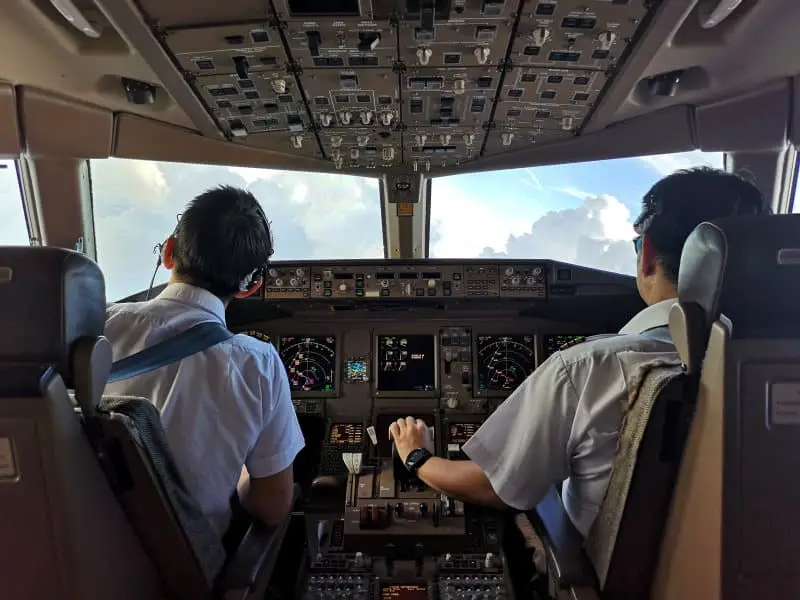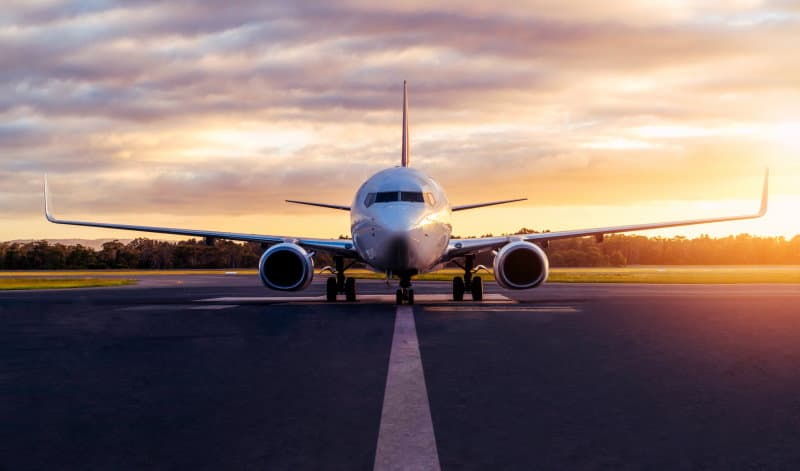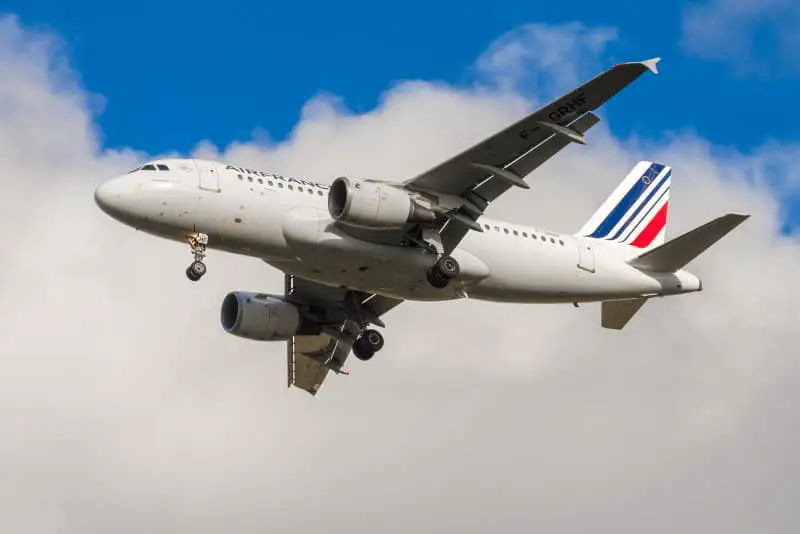We are exposed to EMF radiation from our laptops, tablets, and cell phones every day. Continuous use of Wi-Fi and Bluetooth devices exposes us to high levels of radio waves. Research has proven that exposure to these harmful emissions poses multiple health risks.
EMF radiation affects us here on earth and in the air. Today, many people prefer air travel for business trips and leisure vacations. However, the electronic components inside the airplane expose you to EMF radiation and flying through the air also exposes you to cosmic radiation.
Let’s look at what cosmic radiation is, how flying in an airplane increases your EMF exposure, and ways to reduce radiation during a flight.
What is cosmic radiation?
Cosmic radiation is a form of ionizing radiation generated in outer space. The sun and stars produce this form of radiation, and it is in the atmosphere as invisible waves.
Generally, airplanes fly between 5.9 and 7.2 miles above the ground. As the plane goes higher into the sky, the atmosphere becomes thinner, and there is less air resistance, resulting in a faster flight. The higher the plane gets into the atmosphere, the more exposure to cosmic radiation.
The Earth’s surface, the Earth’s magnetic fields, and atmosphere act as a shield that protects you from space radiation. However, when you fly in an airplane, the protective shield thins out the higher you go, leaving you vulnerable to cosmic ionizing radiation exposure.
The thin air in the atmosphere means that there will be fewer particles that deflect the cosmic waves. For example, if your flight is between coastal regions of the US, then the cosmic radiation absorbed into your body is about 3.5 mrem (0.035 mSv). If you fly more often, your cumulative exposure can increase cancer risk.
What are some EMF sources on an airplane?

Airplanes have a lot of modern equipment, the primary source of EMFs. The communication equipment, cockpit, engines, electrical wiring, sensors, Wi-Fi, and other smart devices from passengers contribute to the amount of EMFs onboard an airplane.
Although these EMF sources emit low levels of electromagnetic fields, the Faraday cage on the airplane walls worsens the emission of these EMFs.
The walls of an airplane are coated with a metal mesh from the hull up to the tail. This metal mesh acts as a Faraday cage that deflects lightning strikes from airplanes when flying. The Faraday cage also deflects electrostatic and electromagnetic fields from the plane. However, the built-in metal mesh doesn’t provide 100% protection. This is because of the small holes in the cage that make room for windows and communication antennas.
When lightning strikes, the charge created hits the metal mesh, discharges itself, and strikes the ground without affecting passengers or other equipment. The Faraday cage keeps electromagnetic fields outside and traps EMFs inside the airplane.
So, a Faraday cage only worsens the effects of electromagnetic radiation because the emissions cannot get out. Additionally, the plane’s windows don’t allow the radiation waves to leak out. For this reason, cell phones have weak signals even when the plane is still on the ground.
Watch this video to learn more about radiation from air travel.
Can there be Wi-Fi Radiation onboard an airplane?
Unfortunately, yes. Apart from the effects of the Faraday cage, the Wi-Fi hotspot is another source of EMF radiation that affects all passengers onboard. Most airplanes have Wi-Fi hotspots that ensure the passengers stay connected throughout the flight.
Regardless of where you’re exposed, Wi-Fi radiation impacts your health. Inflight Wi-Fi uses satellite technology or mobile broadband towers on the ground. The ground-based towers send radio signals to the airplane antennas found at the bottom of a fuselage.
When the plane is flying, it connects to the nearest broadband tower to maintain signals. The only problem with this practice is flying in remote areas with no broadband towers.
The other option to access Wi-Fi is to connect to satellites located in geostationary orbit. The plane communicates with satellites by sending signals via the receivers and transmitters. The airplane antenna distributes the Wi-Fi signals to the passengers via a router.
According to a RouteHappy survey conducted in 2018, around 82 airplanes provide onboard Wi-Fi to passengers. Airlines in the US are equipped with top-notch global Wi-Fi routers, making them the leading airlines that offer inflight Wi-Fi.
Since passengers need fast internet access to stream movies, Netflix, watch TV shows, and play games, this leads to increased emission of EMF radiation. And since Wi-Fi radiation is contained inside due to the effects of the Faraday cage, the risks are magnified.
Apart from Wi-Fi, all passengers have smartphones and other electronic devices that emit radiation. Therefore, the longer your flight is, the longer the exposure to high levels of EMFs.
What is the radiation dose from air travel?
The amount of radiation exposure from air travel depends on:
- Duration of the flight: The more hours you spend on your flight, the more radiation exposure.
- Altitude: The higher the airplane is, the greater the radiation dose. At higher altitudes, the atmosphere shields fewer cosmic radiation waves.
- Latitude: The farther you go North or South from the equator, the more radiation exposure. This is so because the magnetic fields from the Earth deflect cosmic radiation farther away from the equator.
In addition, the security scanners expose you to EMF radiation in the airport. However, according to the Transport Security Administration (TSA), the body scanners use millimeter-wave technology that emits non-ionizing radiation.
How to reduce exposure to radiation while on a flight

It is almost impossible to avoid EMF exposure while flying, but lowering your level of exposure is beneficial to your health. Though most people don’t spend most of their lives flying in an airplane, aircrew members are among those at high risk of exposure to cosmic radiation due to their flight schedule.
Flying for long distances can have a substantial increase in your radiation dose. Some of the actions you can take to reduce your exposure are:
1. Reduce long flights
Reduce the time spent on long flights, especially those flying at high altitudes or those that pass over a pole. Flying under certain conditions and locations can increase exposure to cosmic radiation.
If you want to know your cosmic radiation exposure each time you take a flight, you can use the FAA’S CARI Program. This website allows you to enter your flying information then calculate your radiation dose.
2. Activate airplane mode on your phone
Cell phone antennas continuously send signals to cell towers for connection even when you’re out of network range. At a fast-moving speed, the phone tends to go out of service range resulting in high emissions of radio waves.
Switching your cell phone to airplane mode will reduce the amount of EMF radiation emitted when the phone searches for a connection. When the phone is in airplane mode, it loses all its connection capabilities, and you can’t send or receive texts, calls, or browse the internet.
If you want to access the internet when the phone is in airplane mode, turn on Wi-Fi to connect to the onboard Wi-Fi. However, doing this will increase your exposure.
3. Use an EMF shielding blanket
The various electronic components inside the airplane expose you to multiple levels of EMF radiation. You can shield your body with an EMF protection blanket to reduce your exposure. The blanket keeps you warm and guards your body against EMFs.
For more information, check out my recommended article on the best EMF protection blankets in the market.
4. Use blue-light-blocking glasses
There are artificial lights in airplanes. Some smart devices you’re using while onboard emit blue light that can affect your sleep quality, especially during long flights. Therefore, it is crucial to wear blue-light-blocking glasses to intercept the blue light emitted by these devices and the artificial light.
If you are on a long flight, the blue light glasses help you maintain your sleep cycle. Check out my detailed article on anti-EMF glasses to know what blue glasses you can add to your cart the next time you go shopping.
5. Use a laptop shield
During long flights, most people tend to watch movies, their favorite TV shows, or catch up on work using their laptops. Laptops, tablets, and other handheld devices emit EMF radiation.
Therefore, if you intend to use your laptop during the flight, you should invest in a laptop shield to block EMF frequencies. Laptop protection shields made from highly conductive metal sheets such as aluminum, silicon steel, and copper can help you reduce exposure.
There are various laptop protection shields on the market. I have put together a list of the best laptop shields, so have a look.
6. Use anti-radiation EMF cases for your smartphone
Cell phones are a significant source of EMFs, and during flights, you can use your cell phone to listen to music, play games, watch movies, or buy products online.
Using anti-radiation EMF cases will lower your EMF exposure from cell phones. A high-quality EMF case should be able to block EMFs and radio waves emitted by the phone.
Check out my article on the best anti-radiation phone cases and choose one for your phone.
7. Buy the right headset
A headset is a must-have accessory, especially if you have to fly across different time zones. Having the right headset with functional key elements will make your flight memorable, particularly if you’re on a long-haul flight.
Generally, regular headsets emit low levels of EMF radiation. The metal wiring of the headset can increase electromagnetic exposure. Also, avoid using Bluetooth headphones or AirPods that cause wireless radiation to bounce back in the airplane. Instead, use air tube earbuds that reduce EMF exposure on your head and ears.
Airtube headsets for EMF protection have a hollow air tube that reduces your radiation exposure and allows you to listen to your favorite playlist while traveling.
Here is a list of the best AirTube headsets for EMF protection you can get.
Conclusion
Air travel has become a convenient means of transport making it hard to avoid EMF exposure and cosmic radiation. The best possible solution is to develop ways to reduce your exposure to these EMFs. To solve the health risks associated with air travel, employ the protective products mentioned above to minimize your exposure.
Pregnant women can wear an anti-radiation belly band to protect their unborn child from the harmful effects of electromagnetic field radiation. Belly bands reduce radiation exposure, and they are soft and comfortable to wear for long hours. Please read my article on the best anti-radiation belly bands and choose one suitable to your taste and budget.


